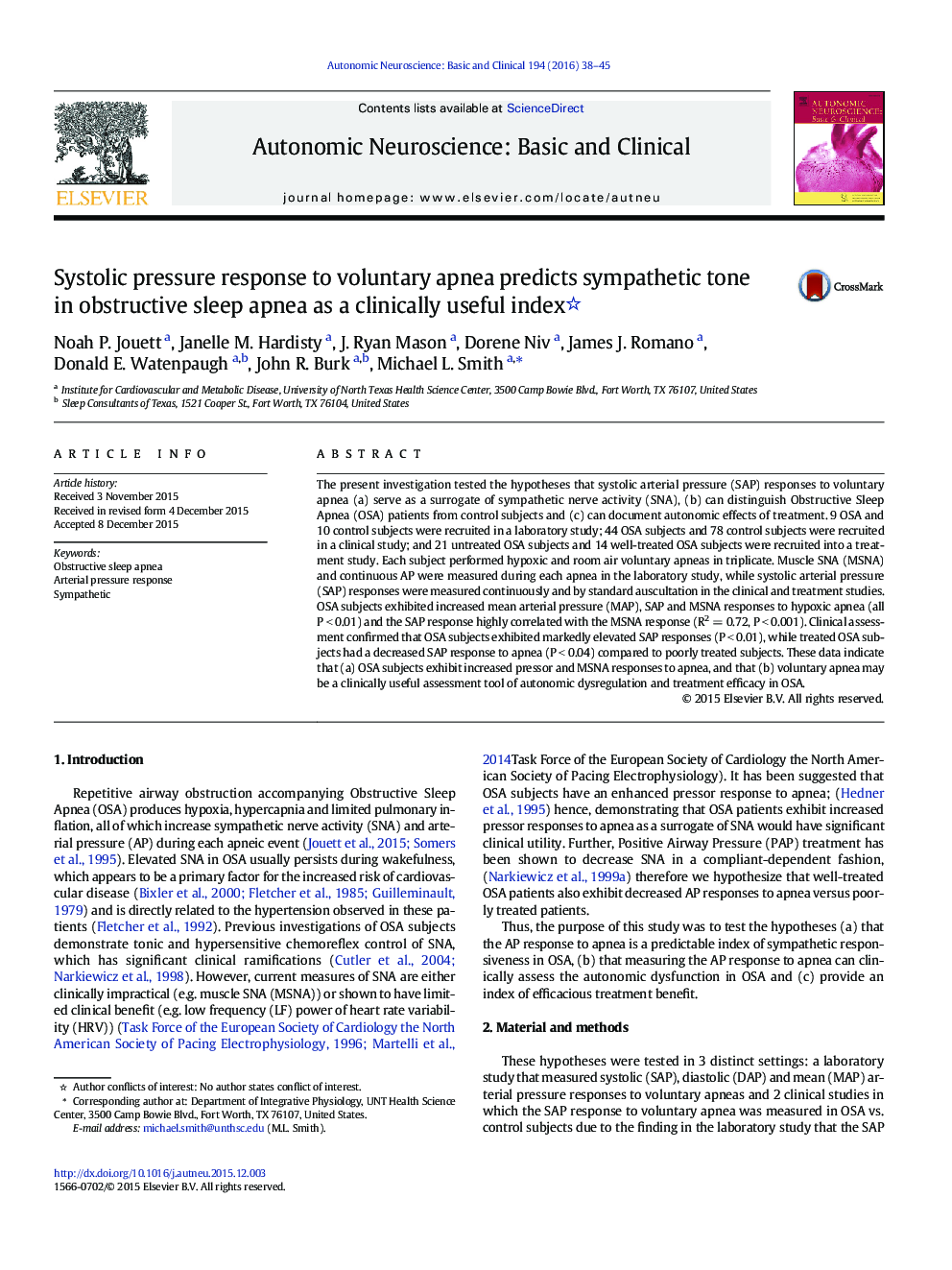| Article ID | Journal | Published Year | Pages | File Type |
|---|---|---|---|---|
| 3034451 | Autonomic Neuroscience | 2016 | 8 Pages |
•Measuring the systolic arterial pressure (SAP) response to a brief 20 second, voluntary apnea can clinically distinguish Obstructive Sleep Apnea (OSA) from control subjects.•This response is reduced with Positive Airway Pressure treatment for > 6 months.•Hence, the SAP response to apnea could be a useful index for clinical assessment of OSA.
The present investigation tested the hypotheses that systolic arterial pressure (SAP) responses to voluntary apnea (a) serve as a surrogate of sympathetic nerve activity (SNA), (b) can distinguish Obstructive Sleep Apnea (OSA) patients from control subjects and (c) can document autonomic effects of treatment. 9 OSA and 10 control subjects were recruited in a laboratory study; 44 OSA subjects and 78 control subjects were recruited in a clinical study; and 21 untreated OSA subjects and 14 well-treated OSA subjects were recruited into a treatment study. Each subject performed hypoxic and room air voluntary apneas in triplicate. Muscle SNA (MSNA) and continuous AP were measured during each apnea in the laboratory study, while systolic arterial pressure (SAP) responses were measured continuously and by standard auscultation in the clinical and treatment studies. OSA subjects exhibited increased mean arterial pressure (MAP), SAP and MSNA responses to hypoxic apnea (all P < 0.01) and the SAP response highly correlated with the MSNA response (R2 = 0.72, P < 0.001). Clinical assessment confirmed that OSA subjects exhibited markedly elevated SAP responses (P < 0.01), while treated OSA subjects had a decreased SAP response to apnea (P < 0.04) compared to poorly treated subjects. These data indicate that (a) OSA subjects exhibit increased pressor and MSNA responses to apnea, and that (b) voluntary apnea may be a clinically useful assessment tool of autonomic dysregulation and treatment efficacy in OSA.
